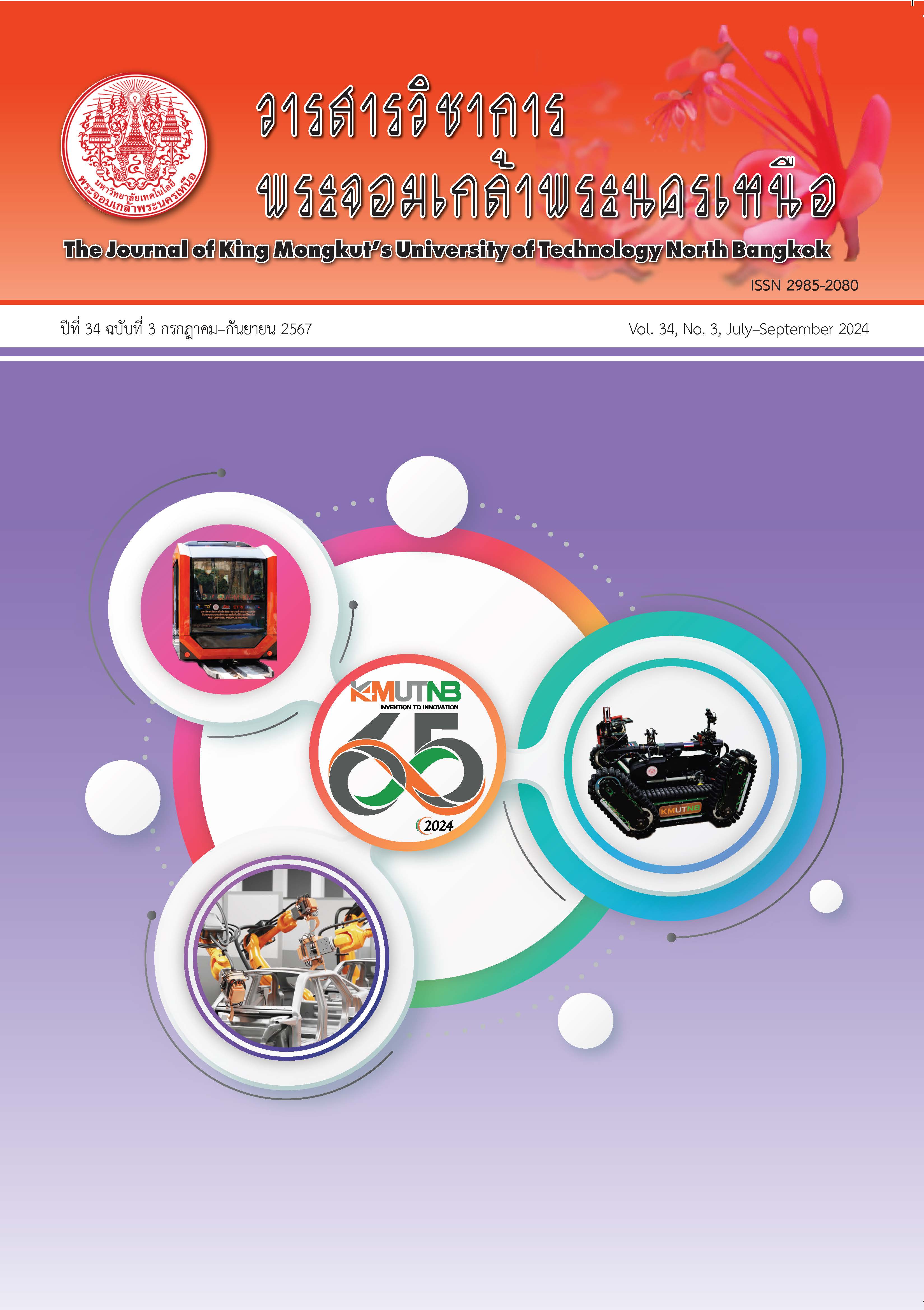กระบวนการดีพไครโอจีนิกส์ที่มีผลต่อโครงสร้างจุลภาคและสมบัติทางกลของเหล็กกล้าเครื่องมือ
Main Article Content
บทคัดย่อ
ปัจจุบันในอุตสาหกรรมมีการใช้งานเหล็กกล้าเครื่องมือกันอย่างแพร่หลาย เนื่องจากเป็นวัสดุที่ใช้ในการขึ้นรูปเครื่องมือ อุปกรณ์ต่าง ๆ ที่ต้องการความแข็งแรง ทนทาน สามารถใช้งานได้ยาวนาน โดยกระบวนการที่ใช้ในการปรับปรุงสมบัติของเหล็กกล้าเครื่องมือถือว่ามีสิ่งสำคัญอย่างมากต่อการพัฒนาวิชาการและอุตสาหกรรมการผลิตเหล็กกล้าเครื่องมือซึ่งงานทบทวนความก้าวหน้านี้ได้รวบรวมกระบวนการปรับปรุงสมบัติของเหล็กกล้าเครื่องมือสำหรับเหล็กกล้าเครื่องมืองานขึ้นรูปเย็น เหล็กกล้าเครื่องมืองานขึ้นรูปร้อน และเหล็กกล้าเครื่องมือความเร็วสูง เพื่อให้เห็นความแตกต่างของกระบวนการอบชุบแบบดั้งเดิมโดยการชุบแข็งและตามด้วยการอบคืนตัวกับกระบวนการไครโอจีนิกส์ที่ถูกพัฒนาขึ้น โดยพบว่า กระบวนการไครโอจีนิกส์จะทำให้เกิดการตกตะกอนของคาร์ไบด์ (Carbides Precipitation) เพิ่มขึ้น ตามชนิดของธาตุผสมในเหล็กกล้าเครื่องมือแต่ละเกรด คาร์ไบด์จะมีขนาดเล็กและกลม (Spherical Carbide) และกระจายตัวอย่างสม่ำเสมอ ทำให้มีความเป็นเนื้อเดียวกัน (Homogeneous) มากยิ่งขึ้น อยู่บนพื้นมาร์เทนไซต์ที่มีขนาดเล็กละเอียดกว่ากระบวนการอบชุบแบบดั้งเดิมช่วยลดปริมาณออสเทนไนท์เหลือค้าง เพิ่มความต้านทานการสึกหรอ ความต้านทานการแตกหัก และต้านทานความล้า (Fatigue resistance) ให้สูงขึ้น
Article Details

อนุญาตภายใต้เงื่อนไข Creative Commons Attribution-NonCommercial-NoDerivatives 4.0 International License.
บทความที่ลงตีพิมพ์เป็นข้อคิดเห็นของผู้เขียนเท่านั้น
ผู้เขียนจะต้องเป็นผู้รับผิดชอบต่อผลทางกฎหมายใดๆ ที่อาจเกิดขึ้นจากบทความนั้น
เอกสารอ้างอิง
A. W. Orlowicz, M. Mróz, M. Tupaj and A. Trytek, “Materials used in the automotive industry,” Archives of Foundry Engineering, vol. 15, pp. 75–78, 2015.
P. Jurci, “Sub-zero treatment of cold work tool steels-Metallurgical background and the effect on microstructure and properties,” HTM Journal of Heat Treatment and Materials, vol. 72, no. 1, pp. 62–68, 2017.
P. Baldissera and C. Delprete, “Deep cryogenic treatment: A bibliographic review,” The Open Mechanical Engineering Journal, vol. 2, pp. 1–11, 2008.
B. Li, T. Zhang, and S. Zhang, “Deep cryogenic treatment of carbide yool and its cutting performances in hard milling of AISI H13 Steel,” Procedia CIRP, vol. 71, pp. 35–40, 2018.
B. Podgornik, I. Paulin, B. Zajec, S. Jacobson, and V. Leskovšek, “Deep cryogenic treatment of tool steels,” Journal of Materials Processing Technology, vol. 229, pp. 398–406, 2016.
L. H. Manjunatha, M. Lokesha, and B. S. Ajaykumar, “A review: Mechanical properties of HSS steel by deep cryo-treatment,” IOP Conference Series: Materials Science and Engineering, vol. 376, no. 1, pp. 012098, 2018.
A. Oppenkowski, S. Weber, and W. Theisen, “Evaluation of factors influencing deep cryogenic treatment that affect the properties of tool steels,” Journal of Materials Processing Technology, vol. 210, no. 14, pp. 1949–1955, 2010.
M. Sathitjinda, Iron & Steel Heat-Treatment Engineering. Bangkok: Chulalongkorn University Printing House, Textbook Publishing Center, 1994 (in Thai).
N. Thammachot, Metallurgy. Bangkok: Chulalongkorn University Printing House. Textbook Publishing Center, 2017 (in Thai).
R. Thornton, T. Slatter, and H. Ghadbeigi, “Effects of deep cryogenic treatment on the dry sliding wear performance of ferrous alloys,” Wear, vol. 305, pp. 177–191, 2013.
N. A. Özbek, “Effects of cryogenic treatment types on the performance of coated tungsten tools in the turning of AISI H11steel,” Journal of Materials Research and Technology, vol. 9, no. 4, pp. 9442–9456, 2020.
J. Soleimany H. Ghayour, K. Amini, and F. Gharavi, “The effect of deep cryogenic treatment on microstructure and wear behavior of H11 tool steel,” Physics of Metals and Metallography, vol. 120, no, 9, pp. 888–897, 2019.
D. Das, A. K. Dutta, V. Toppo, and K. K. Ray, “Effect of deep cryogenic treatment on the carbide precipitation and tribological behavior of D2 steel,” Materials and Manufacturing Processes, vol. 22, no. 4, pp. 474–480, 2007.
P. H. S. Cardoso, C. L Israel, M. B. Da Silva, G. A. Klein, and L. Soccol, “Effects of deep cryogenic treatment on microstructure, impact toughness and wear resistance of an AISI D6 tool steel,” Wear, pp. 456–457, 2020.
P. Jovicevic-Klug, M. Joviˇcevi´c-Klug, and B. Podgornik, “Effectiveness of deep cryogenic treatment on carbide precipitation,” Journal of Materials Research and Technology, vol. 9, no. 6, pp. 13014–13026, 2020.
F. Kara, M. Karabatak, M. Ayyıldız, and E. Nas, “Effect of machinability, microstructure and hardness of deep cryogenic treatment in hard turning of AISI D2 steel with ceramic cutting,” Journal of Materials Research and Technology, vol. 9, no. 1, pp. 969–983, 2020.
A. Çiçek, F. Kara, T. Kıvak, E. Ekici, and I. Uygur , “Effects of deep cryogenic treatment on the wear resistance and mechanical properties of AISI H13 hot-work tool steel,” Journal of Materials Engineering and Performance, vol. 24, no. 11, pp. 4431–4439, 2015.
S. S. Gill, J. Singh, R. Singh, and H. Singh, “Effect of cryogenic treatment on AISI M2 high speed steel: metallurgical and mechanical characterization,” Journal of Materials Engineering and Performance, vol. 21, no. 7, pp. 1320–1326, 2012.
P. Jovicevic-Klug, and B. Podgornik, “Comparative study of conventional and deep cryogenic treatment of AISI M3:2 (EN 1.3395) high-speed steel,” Journal of Materials Research and Technology, vol. 9, no. 6, pp. 13118–13127, 2020.

